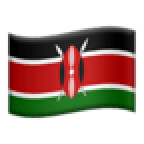The recent fatal shooting of a man by a bodyguard attached to State House spokesperson Hussein Mohamed has raised questions about the circumstances leading to the incident.
As conflicting reports emerge over whether the shooting was a case of self-defence or an altercation gone wrong, attention now shifts to determining what happened.
The process is outlined in the National Police Service Standing Orders, which governs the use of firearms by law enforcement officers in Kenya.
According to Citizen TV, the officer, Muhammed Yusuf Keinan, reported being attacked by three men in a statement at Muthangari Police Station, Nairobi, around 8:00 p.m.
He claimed one of the assailants tried to snatch his Ceska pistol, prompting a struggle. In his defence, he fired warning shots before ultimately shooting a victim identified as Amos Lang’at, who succumbed to his injuries.
However, Standard Media reported a different account, alleging that the officer was involved in a dispute over a pool bet at a local establishment in Kawangware.
)
With such discrepancies in the accounts, investigators now face the critical task of determining whether the use of force was justified under Kenyan law.
READ ALSO: How to identify police officer's rank by their badge, uniform
What Does the Law Say?
Chapter 47 of the National Police Service Standing Orders outlines the legal framework guiding the use of firearms by police officers.
According to these regulations, firearms may only be used when:
Protecting life – An officer can use a firearm if their life or the life of another person is in imminent danger.
Self-defence – If an officer is under immediate threat of serious bodily harm or death.
Preventing escape – Firearms can be used to prevent the escape of a suspect involved in a serious crime of violence, provided no other means of restraint are available.
Suppressing violent riots – Officers may use firearms when facing an imminent and serious threat to public safety.
The guidelines also strictly prohibit the use of firearms unless all non-violent measures have been exhausted, and officers must ensure proportionality in their use of force.
If the bodyguard's claim of self-defence is verified, he may be shielded from legal consequences.
However, if investigations confirm that the shooting resulted from a personal dispute, he could face criminal charges ranging from manslaughter to murder.
)
What Awaits the Officer?
1. Internal Police Investigation & Disarmament
Per protocol, the officer has already been disarmed pending investigations. His firearm will undergo forensic analysis, including ballistics testing and gunshot residue examination, to confirm whether the shots fired align with his account.
2. Review by the Independent Policing Oversight Authority (IPOA)
Since the shooting resulted in a fatality, the case must be reported to IPOA, which will conduct an independent investigation. IPOA has the authority to:
Verify whether the use of force was proportionate and justified.
Recommend criminal prosecution if excessive force was used.
3. Legal Review & Possible Charges
If IPOA and police investigators determine that the officer violated firearm regulations, he could be prosecuted under:
The Penal Code – If found guilty of unjustified homicide, he may face manslaughter or murder charges.
The National Police Service Act (2011) – If found guilty of misuse of a firearm, he may face disciplinary action, dismissal, or legal penalties.
4. Witness Statements & CCTV Analysis
Investigators will collect testimonies from eyewitnesses and CCTV footage from the scene to establish whether Keinan acted in self-defence.
If the investigation supports the officer’s version of events, he will be cleared.
However, if evidence suggests misconduct or excessive force, further action will be taken in accordance with the law.


)
)
)
)
)